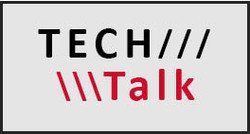 By William Kolbe, BCE
By William Kolbe, BCE
The amino acids in rodent urine and hair will fluoresce (shine) when exposed to certain wavelengths of light found in black light, commonly referred to as ultraviolet light. Black light shines a deep blue and often is used with artistic poster displays. Other substances like starch, bleached sack fibers, optical bleaches, glues and adhesives, dyes, some cleaning agents, and many industrial chemicals also will fluoresce, so care and practice is needed to effectively use this inspection and diagnostic tool as a PMP.
Rodents are incontinent. This means they defecate and urinate as they move about constantly. Unlike humans, as soon as the rodent body produces excreta, it is expelled. Pest control practitioners know most urine and droppings are deposited where the rodents spend most of their time and where they travel. A visual inspection using a flashlight will often reveal rodent droppings, urine staining and other evidence. The black light can be used to corroborate suspected contamination and rodent presence.
After visually identifying likely rodent entry points along a structure’s perimeter, use a black light to determine if it is indeed being used as a runway. Black light inspection of premises is less accurate as dust, dirt, debris and cleaning agents can obscure urine fluorescence. The light is most effective for inspecting packages, stored materials and bagged goods.
USING THE LIGHT
- Rechargeable black lights should be fully charged when used, to allow for the strongest possible illumination.
- Black lights should be used in dark, or subdued lighting locations. If practical, turn overhead lights down, or move goods being inspected to darker, less well-lit areas.
- Move the black light unit over the surface being examined, holding it as close as possible without damaging the unit.
- Hold the light at an angle, allowing visual observations to be made.
- Urine staining is most likely found between boxes and bags.
RECOGNIZING RODENT FLUORESENCE
- Rodent urine fluoresces blue-white to yellow-white when dry, bluer when fresh and becoming paler with age.
- Rodent hair fluoresces blue-white.
- Starches, detergents and soaps show as a brilliant blue-white stain.
- Bleached fibers in sacking looks blue-white.
- Pitches and tars look yellow.
- Glues used to seal cardboard boxes radiate a mustard yellow color.
- Human urine looks like rodent urine, but will be present over larger areas.
- Lubrication oils and grease fluoresces green-white to blue-white to brown.
- Rodent urine often will appear as a thin line of dots, drops or streaks running between cartons and bags, especially on vertical surfaces.
- Rodent urine often will have tail drag marks through the fluorescing deposit.
- Rodent urine has little to no symmetry to its deposit. If a deposit appears large, patchy and evenly distributed, it’s not rodent urine.
PRACTICE MAKES PERFECT! Practice using the black light on pieces of cardboard or packaging known to have been in contact with rodents. You also could visit a pet store and ask the manager if you can practice near the pet mice or rat containers (before or after hours of course). You might land a contract checking for rodent escapees!
Use the black light on cartons and bags known to come from uninfested areas and cardboard known to have been exposed to bleach, glues and other chemicals to become accustomed to what other materials and chemicals look like when fluorescing.
LIMITATIONS AS A TOOL. Understand black lights have limitations as a tool. Black light urine evidence should be used as a first indicator of possible rodent contamination, or to corroborate other suspected evidence. It shouldn’t be used as a stand-alone, diagnostic tool to reject goods as we know other substances fluoresce.
Kolbe is the director of technical and training services, Viking Pest Control, Bridgewater, N.J. His career in pest management started in June 1974 after graduating from the University of Delaware.
This Tech Talk article was originally published in the September 2016 edition of PCT magazine.
